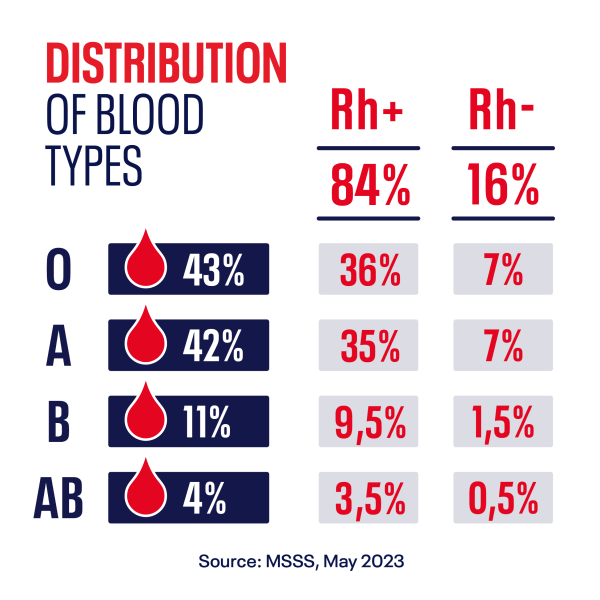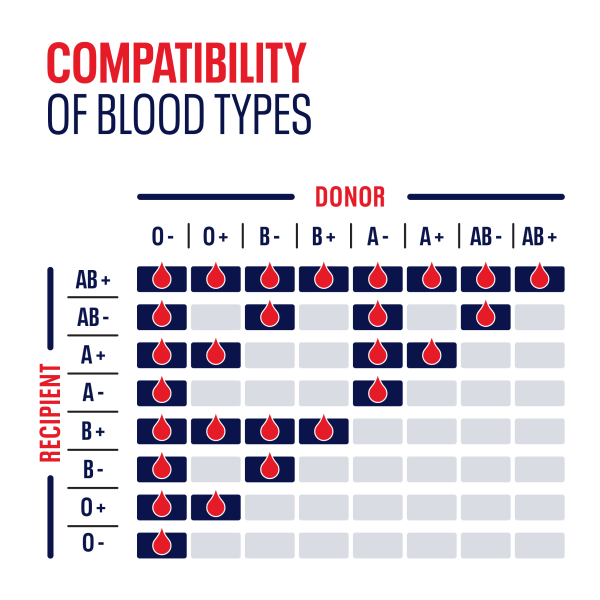Blood types
- ABO and Rh Systems
- Distribution of blood types
- Compatibility of blood types
- Your blood type can make a difference
ABO and Rh Systems
Human blood types are determined by "antigens," substances found on the surface of the red blood cells. Blood types are categorized into "systems." There are four possible types in the ABO system: A, B, O and AB. In the Rh system, the presence or absence of the "D" substance on the surface of the red cell determines whether the blood is Rh positive (+) or negative (-).
Distribution of blood types
Some blood groups are more common than others. The nationwide distribution is as follows:
Compatibility of blood types
Before proceeding with a transfusion, it is essential to know that the donor’s blood type is compatible with that of the recipient. If a patient receives the transfusion of a blood component from a non-compatible group, their immune system will recognize the presence of foreign substances called antigens. Incompatibility can lead to the rejection of the blood component and deterioration in the patient’s state of health. Compatibility tests are conducted at the hospital before each transfusion.
The table below outlines donor/recipient compatibilities for red blood cell transfusions. You will notice that the type O- can give blood to anyone—it is described as "universal donor." It is the blood type used in emergency situations. People with type AB+ blood can receive from any other blood type; they are therefore "universal recipients." However, in most cases, recipients receive blood from a donor in their own group. In other words, a person with type A+ blood will receive blood from a donor who also has A+ blood.

Your blood type can make a difference
Depending on your blood type, we need your red blood cells, your plasma or your platelets. Discover what is the desired blood component based on your blood type.
